Dieselization – Ten Class 1 railroads had already dieselized before this year, including the Atlanta & St. Andrews Bay; Chicago, Indianapolis & Louisville (Monon); Columbus & Greenville; Detroit & Mackinac; Elgin, Joliet & Eastern; Gulf, Mobile & Ohio; Lehigh & New England; New York, Ontario & Western; New York, Susquehanna & Western; and Texas-Mexican. The Minneapolis, Northfield & Southern and Spokane International would dieselize before year’s end.
Consolidation Line diesels – Fairbanks-Morse introduced its C-Liners in 1,600-hp, 2,000-hp, and 2,400-hp models for both freight and passenger service. Significantly, this was the last completely new design for carbody road locomotives until 1967.
Final 4-8-4s – The Norfolk & Western’s shops built the last three class J streamlined 4-8-4 passenger locomotives. The last steam locomotives from commercial builders for North American railroads had been delivered in 1949.
1951:
First six-motor road switchers – Alco delivered its first 1,600-hp, C-C wheel-arrangement RSD-4s in March. Its Electro-Motive Division competitor, the 1,500-hp SD7, didn’t appear until February 1952.
RGS quits – The narrow gauge Rio Grande Southern, suffering from loss of business and misfortunes including fires, floods, and washouts, ran its last train on December 27.
1952:
Gas-turbine-electric locomotives – After prolonged testing of a General Electric demonstrator, the Union Pacific placed its first ten GE-built 4,500-hp gas-turbine-electric locomotives (GTELs) into regular freight service. By the end of 1961 the UP had 55 GTELs on its roster, but was the only North American railroad to use this type of power. The early models began
1953:
High-horsepower C-Cs – Fairbanks Morse instigated a slow-played horsepower race with its H24-66, a 2,400-hp, six-motor hood unit dubbed the Train Master. Alco’s 2,400-hp RSD-15 followed in 1956, but Electro-Motive’s 2,400-hp SD24 didn’t appear until 1958.
K brakes out – K-type freight car air brake systems, including KC and KD versions, were banned from interchange as of July 1, with the exceptions of tank cars and returning empty cars. As of October 1, only empty tank cars were accepted in interchange with K brakes, and no cars with K brakes could be interchanged after December 31.
Last domestic steam – The Norfolk & Western (of course) built the last new steam locomotives for service in the United States, 0-8-0 switchers that were highly modernized versions of a United States Railroad Administration design.
1954:
GP9 debut – Electro-Motive Division’s 1,750-hp, B-B road switcher was an evolutionary advance over the 1,500-hp GP7, and with 4,257 units produced through 1959 it became the most widely used locomotive of the 1950s.
1955:
Interurban goes diesel – The Illinois Terminal completed dieselization of its considerable electric railway freight operations in central Illinois. The IT’s electric passenger service was shrinking, but continued until June 1958.
Streamliners change course – The Union Pacific shifted the Council Bluffs, Iowa-to-Chicago routing of its transcontinental passenger trains from the Chicago & North Western to the Chicago, Milwaukee, St. Paul & Pacific (Milwaukee Road). The UP had used the North Western as its preferred connection east of Council Bluffs since 1901, but grew dissatisfied with C&NW’s service levels, timekeeping, and unwillingness to upgrade equipment.
Trailer Train formed – On November 9 the Pennsylvania and Norfolk & Western RRs with the Rail-Trailer Corp. form Trailer Train Co. Its objectives are to standardize trailer-on-flatcar (TOFC) equipment using two-trailer cars, encourage the growth of TOFC service, and provide members with the best and most cost-effective rolling stock. Operations began in March 1956 with 75-foot ex-PRR flatcars carrying two 35-foot trailers. As TOFC operations grow, most Class 1 railroads become Trailer Train members.
1956:
Hi-level El Capitan – The Atchison, Topeka & Santa Fe re-equips its popular Chicago-Los Angeles chair car streamliners with double-deck equipment, including, chair, lounge, and dining cars. The Hi-levels combine increased passenger capacity with improved comfort, and after 1964 are added to other Santa Fe trains.
Final Zephyr – Following line improvements, the Chicago, Burlington & Quincy launches the last completely new train of the streamliner era, the Chicago-Kansas City Kansas City Zephyr.
1957:
Dixie Line merger – The Nashville, Chattanooga & St. Louis, which had styled itself the “Dixie Line,” merged into its owner, the Louisville & Nashville. The L&N adopted the Dixie Line nickname for itself.
“Old and Weary” abandonment – The New York, Ontario & Western, after a long decline since 1932, ceased operation on March 29. Its assets were sold at auction and none of its lines remain in operation.
Older freight trucks banned – As of January 1, freight cars in interchange service had to have journal boxes cast integrally with the truck sideframes. This eliminated Andrews, Vulcan, and some other types of trucks using separate journal boxes. At the same time, older cast-sideframe trucks with “I,” “L”, and “T” cross sections were banned from interchange.
1958:
Eighty-five-foot flatcars – Trailer Train standardizes TOFC equipment long enough for two 40-foot trailers. Integral hitches on the cars secure trailers with a minimum of time and labor.
SI purchase – The 150-mile Spokane International RR was acquired by the Union Pacific on October 6.
Steel wheels required – As of January 1, new or newly rebuilt freight cars could no longer have cast-iron wheels. (Ribbed backs for increased strength were the most common characteristic of cast-iron wheels.)
1959:
Low-nose road switchers – Following the lead of some mining and industrial users, Electro-Motive and Alco began offering optional low-profile short hoods, allowing greater forward visibility through wide cab windshields. Although usually associated with models like the GP20 and RS-11, the last GP9s built, for the Southern Pacific, came with what were then often called “chopped noses.”
Second generation diesels – Builders began promoting their latest models as replacements not for steam power but for the earliest freight diesels, which were now 14 to 18 years old. Electro-Motive Division leads this movement, offering to accept older units as trade-ins and remanufacture certain components for new locomotives, especially GP20s and GP18s.
Dieselization practically complete – Only seven Class 1 railroads will operate steam locomotives in revenue service after this year (Chicago Burlington & Quincy subsidiaries Colorado & Southern and Ft. Worth & Denver; Duluth, Missabe & Iron Range; Grand Trunk Western; Illinois Central; Lake Superior & Ishpeming; and Norfolk & Western), and mostly on a seasonal basis.
1960:
End of the steam era – This year saw the last non-excursion steam operations on the Grand Trunk Western, Illinois Central, and Norfolk & Western.
Second generation diesels – The first diesels meant to replace not steam but earlier diesels, thus the “second generation,” were already in production, including the Electro-Motive Division GP20 and SD24, and the General Electric U25B.
Bigger freight cars – By this time the “standard” freight car being built was at least 50 feet long and had a capacity of at least 70 tons, the result of gradual evolution from earlier 40-foot, 50-ton cars. Tri-level automobile racks for 85-foot flatcars were introduced this year.
Erie Lackawanna merger – The Erie Lackawanna RR was formed by the merger of the Delaware, Lackawanna & Western and the Erie RRs on October 17.
Chicago & North Western/Minneapolis & St. Louis – The M&StL RR was purchased by the C&NW on November 1st, and became part of the C&NW.
1961:
Jumbo covered hoppers – American Car & Foundry (ACF) introduced its “Center Flow” 100-ton jumbo covered hopper car design for bulk shipments; other builders soon offered cars of similar capacity.
1963:
Alco Centuries – Alco introduced its first “Century-series” locomotives, the four-axle C-420 and the six-axle C-628.
Southern/Central of Georgia – Central of Georgia became a subsidiary of the Southern Ry. System.
1964:
Hy-cube boxcars – Very large boxcars approximately 17 feet high, 10 feet wide, and 87 feet long were introduced for automobile parts traffic. They had the largest fully enclosed carbodies ever built to achieve the highest possible capacity in cubic feet, thus “hy-cube.” They were built to carry large numbers of relatively lightweight metal stampings. Because of their extreme height, these cars were exempted from the requirement that boxcars have rooftop running boards.
Last E unit – EMD delivered its last twin-engine, 2400-hp A1A-A1A passenger diesel to the Union Pacific, E9A no. 914. F-type freight units had not been built since 1957.
Norfolk & Western/Nickel Plate/Wabash – N&W, which had already absorbed the Virginian RR in 1959, merged with the Nickel Plate (New York, Chicago & St. Louis) and the Wabash. The merger changed the N&W from a “Pocohontas Region” coal road into a major Eastern and Midwestern carrier.
1965:
EMD 645 series – EMD introduced its 645-series diesel engine in a line of locomotives including the 16-cylinder, 3,000-hp GP40 and SD40, and the 20-cylinder, 3,600-hp SD45. (EMD engine designations refer to cylinder displacement in cubic inches. The 567 series built since the 1930s displaced 567 cubic inches per cylinder; the new engines displaced 645 cubic inches per cylinder).
1966:
New cars without running boards – As of April of this year, new “house” cars could be constructed without running boards, roof-height ladders, and high-mounted hand brakes. Some cars already on production lines continued to receive this equipment.
1967:
ACI labels – Official introduction of Automatic Car Identification (ACI) system, with color-bar code labels to be applied to rolling stock for reading by computerized KarTrak scanners. All equipment in interchange service on roads belonging to the Association of American Railroads (AAR) had to have ACI labels by 1970. (Equipment used intraline did not have to be labeled, and often was not on railroads that did not themselves use the ACI system).
Cowl units – The first “cowl” type locomotives, the EMD FP45 and the GE U30CG, were built for passenger service on the Santa Fe (Atchison, Topeka & Santa Fe Ry).
Missouri Pacific/Chicago & Eastern Illinois – MP took control of the C&EI, in which it had purchased an interest in 1961.
Seaboard Coast Line merger – SCL was formed by merger of the Atlantic Coast Line and Seaboard Air Line RRs on July 1st.
1968:
Penn Central merger – The Pennsylvania and New York Central RRs merged to form the Penn Central on February 1st. On December 31st, the PC took over the freight and passenger operations of the New Haven RR (New York, New Haven & Hartford).
C&NW/Chicago Great Western – The CGW was absorbed into the Chicago & North Western by merger on July 1st.
1969:
Centennial locomotives – Electro-Motive built the largest-ever diesel electric locomotive, the twin-engine, eight-axle, 6,600-hp DD40AX. Forty-seven of these monsters were built specially for the Union Pacific, which named them the “Centennial” type to commemorate the 100th anniversary of the completion of the first transcontinental railroad in North America.
Demise of Alco – Alco Products, originally the American Locomotive Co., stopped building locomotives. Montreal Locomotive Works, which had been an Alco subsidiary, continued to build and develop Alco’s locomotive designs in Canada.
1970:
Burlington Northern merger – The BN was formed by the merger of the former “Hill Roads” created by empire builder James J. Hill in the nineteenth and early twentieth centuries. These included the Chicago, Burlington & Quincy (with the Colorado & Southern and Fort Worth & Denver), the Great Northern, the Northern Pacific, and the Spokane, Portland & Seattle.
Covered tri-level auto racks – Automobile racks for 89-foot flatcars began to be built with tops, side panels, and end doors for protection against vandalism and other in transit damage. Ninety feet long and almost 19 feet high, covered auto racks are near the practical size limit for non-articulated railroad cars.
Running boards on the way out – By this year no new “house” cars, boxcars and other types with full-height enclosed bodies, were being built with running boards (“roof walks”). Running boards continue to be used for access to rooftop hatches on bulk-loading cars, primarily covered hoppers.
1971:
Amtrak – The National Railroad Passenger Corp., owned by the U.S. government and operating as “Amtrak,” took over intercity passenger operations on U.S. railroads as of May 1st. A railroad that gave up its passenger trains to Amtrak could escape the expense of their operation, but had to grant Amtrak trackage rights for the trains the new carrier decided to continue operating. Two roads, the Denver & Rio Grande Western and the Southern, elected not to join Amtrak and so had to continue their existing services.
Monon/L&N – The Monon (Chicago, Indianapolis & Louisville) merged with the Louisville & Nashville July 31st and became part of the L&N.
1972:
EMD Dash-2s – Electro-Motive introduced its “Dash-2” locomotive line, led by the 3,000-hp GP40-2 and the 3,600-hp SD45-2. Dash-2 locomotives were evolutionary refinements of earlier models featuring easier maintenance and greater reliability. Best seller in the line was the 3,000-hp SD40-2, which went on to become the most popular diesel-electric locomotive ever built. Other notable Dash-2s were the “Tunnel Motors,” the SD45T-2 and the SD40T-2 (introduced in 1974), so called because they had modified radiators for better cooling in long tunnels.
Illinois Central Gulf merger – The ICG was formed by the merger of the Illinois Central and the Gulf, Mobile & Ohio RRs. (In 1988, after spinning off many branches from its Chicago-New Orleans trunk route, the ICG became the Illinois Central RR once again.
Milwaukee electrification cut back – Milwaukee Road (Chicago, Milwaukee, St. Paul & Pacific) ceased electrified operations on its Coast Division in Washington State.
1973:
Chessie System merger – Chessie System RRs formed by merger of the Baltimore & Ohio, Chesapeake & Ohio, and Western Maryland. Chessie System adopted common paint schemes for locomotives and cars, but rolling stock continued to carry the reporting marks of the individual railroads.
New power for Amtrak – Amtrak received its first new locomotives, SDP40F cowl units in June. By September of 1974, EMD had delivered 150 of these 3,000-hp, C-C passenger engines.
1974:
Conrail – The Consolidated Rail Corp., “Conrail,” took over the Penn Central, which had been bankrupt since 1970. The government-owned corporation was formed under the United States Railway Association Act pf 1970, specifically enacted by Congress to deal with the consequences of the PC bankruptcy. Conrail also absorbed six other Northeastern railroads, the Central of New Jersey, Erie Lackawanna, Lehigh Valley, Lehigh & Hudson River, Pennsylvania-Reading Seashore Lines, and Reading. After a program of upgrading and rehabilitation Conrail became one of the best-run railroads in North America, and is now privately owned.
Family Lines – “Family Lines” name adopted for the Seaboard Coast Line and its subsidiaries, which included the Clinchfield, Georgia, Louisville & Nashville, and West Point Route (Atlanta & West Point and Western Ry. of Alabama). Though a common locomotive and caboose paint scheme was established for all these roads, the Family Lines was a marketing device and not a railroad corporation itself. Rolling stock continued to carry the reporting marks of the individual railroads.
Milwaukee electrification unplugged – The Milwaukee Road ceased electrified operations on its Rocky Mountain Division in Idaho and Montana on June 16th, ending what had been the longest mainline electrification in North America.
Running boards off – Target date for removal of running boards from existing house cars. Railroads generally complied, but a few old house cars could still be seen with running boards years later.
Southern/Norfolk Southern – The Norfolk Southern Ry Co., a regional carrier in North Carolina and southeastern Virginia, was purchased by the Southern Ry. System. NS kept its name as a Southern subsidiary until 1981, when it was renamed the Carolina & Northwestern.
1975:
Amfleet – Amtrak began receiving its first new passenger cars, the “Amfleet” coaches and lounge/food service cars built by the Budd Co. Intended to replace older equipment in the Northeast Corridor and other services east of the Mississippi, the cars are distinctive for their rounded, Metroliner-style bodies and inside-frame Pioneer III trucks. By 1977 Amtrak had 492 Amfleet cars, and in the 1980s went on to acquire more cars of similar design called Amfleet II.
General Electric units for Amtrak – Amtrak received 25 P30CH cowl body locomotives from GE between August of this year and January 1976.
1976:
Amtrak F40PH – Amtrak received its first F40PH locomotives in June. These 3,000-hp B-Bs became standard power on most Amtrak trains, and in a few years replaced the SDP40Fs, which had turned out to be derailment-prone on some railroads.
MP/C&EI/T&P – Missouri Pacific absorbed the Chicago & Eastern Illinois, as well as long-time subsidiary Texas & Pacific by merger.
1977:
ACI out – The AAR abolished the requirement for ACI labels, effective in December. Automatic Car Identification had never been accepted by all railroads, was not sufficiently reliable, and by this time was outmoded.
GE Dash 7s – General Electric introduced its “Dash 7” line of locomotives led by the 3000-hp B30-7 and C30-7. Long the number-two locomotive builder, GE began catching up to EMD with the Dash 7s, in large part because of their superior fuel economy.
1978:
RoadRailers – Bi-Modal Corp., a subsidiary of the North American Car Corp., introduced the “RoadRailer,” a trailer that could be pulled over the road on rubber tires and on rails on its own railroad wheels in articulated trains. Later dubbed the Mark IV RoadRailer, this was an updating of an idea first tried in the 1950s.
U-1 inspection labels – The Federal Railroad Administration (FRA) issued an emergency order on March 23 calling for inspection, restriction, and replacement of type U-1 freight car wheels manufactured between 1958 and 1969 by the Southern Wheel Company. The National Transportation Safety Board had found these wheels at fault ina number of deadly derailments, and all 33″ wheels on freight cars of 70-ton or less capacity had to be checked. Cars checked and found not to have U-1 wheels, or which had their U-1 wheels replaced, were marked with a 6″ yellow dot on a 9″-square patchof black. New cars built from March through December were given these inspection markers by their builders. Cars checked and found to have U-1 wheels were marked in a similar way but with white dots. All U-1 wheels had to be replaced by the end of the year, and in the mean time their use was limited. After March 31st cars with U-1 wheels could not be used to carry hazardous materials, and after June 30th could not be coupled in trains with other cars carrying hazardous materials.
1979:
Amtrak AEM-7s – Amtrak received the first of its AEM-7 B-B electric locomotives for Northeast Corridor service. These lightweight, 7,000-hp units were built by EMD (in bodies by the Budd Co.) under license from ASEA of Sweden. AEM-7s regularly achieve speeds of 125 mph in Metroliner service. Also in this year, Amtrak took over the last remaining Southern Ry. passenger train, the Southern Crescent.
Superliners – Amtrak received the first of its eventual fleet of almost 300 double-deck coaches, sleepers, diners, and lounge cars, called “Superliners,” for long-distance trains west of the Mississippi. The Superliners were the last passenger cars to be built by Pullman Standard.
1980:
CSX merger – CSX Corp. formed by merger of Chessie System and Seaboard Coast Line. The two railroads continued to operate independently until 1986 under control of CSX Transportation.
EMD Super Series – Electro-Motive introduced its Super-Series locomotives, led by the GP50, with 3,500-hp diesel engines, radar wheel slip control, and noise reduction equipment including exhaust silencers and quieter radiator fans (“Q fans”). The GP50 was followed by the six-axle SD50 in 1981.
Frisco/BN – The St. Louis-San Francisco became part of the Burlington Northern by merger on November 21st.
Milwaukee cut back – Milwaukee Road ceased all operations on its Pacific Extension west of Miles City, Montana, in March. Almost 1,000 miles of main line through Montana, Idaho, and Washington were abandoned.
Rock Island bankruptcy – Rock Island (Chicago, Rock Island & Pacific), bankrupt since 1975, ceased operations on March 31st. Though it no longer existed as an operating entity, very little of its physical plant was abandoned. Instead it was parceled out to several larger and smaller rail systems. Perhaps most notably, the Cotton Belt (St. Louis-Southwestern) acquired the Rock Island’s main line from Kansas City west to Santa Rosa, N.M., connecting with the Cotton Belt’s parent Southern Pacific.
10-Pack/Impack intermodal cars – Santa Fe introduced the “10-Pack Fuel Foiler,” a 10-unit, articulated, skeleton highway-trailer car for piggyback service. Santa Fe had first experimented with a 6-unit car, and 4-, 5-, and 6-unit cars of similar pattern (Impack and other designs) have been built for other railroads and for Trailer Train.
1981:
Double-stack container cars – Southern Pacific introduced its “Double-Stack” five-unit, articulated container car. SP had been experimenting since 1977 with single and triple-unit cars carrying standard shipping containers stacked two high, and within five years the concept was being copied widely by car builders, railroads, and ocean shipping companies.
Guilford Transportation – Guilford Transportation Industries purchased the Boston & Maine, Delaware & Hudson, and Maine Central RRs. The railroads continued to operated as separate entities, and locomotives and cars were repainted with individual road name lettering in the common Guilford paint scheme. After 1984 Guilford leased the B&M and MEC to the Springfield Terminal, a B&M subsidiary, to take advantage of the ST’s shortline work rules.
Union Pacific expansion – UP merged with Missouri Pacific and Western Pacific on December 22nd. MP retained some part of its operating identity until 1986—although MP locomotives began to be painted yellow and gray, they still carried their own road name—but WP immediately became a part of the UPRR.
1982:
Cabooses on the way out – United Transportation Union (UTU) agreed with railroads on guidelines for elimination of cabooses. Some freight trains had been operating without cabooses for a number of years, but this national agreement opened the way for their complete elimination. The caboose did not disappear overnight, but in the 1984 edition of the Car and Locomotive Cyclopedia, a chapter on end-of-train devices replaced the traditional chapter on cabooses.
GE Dash 8s – General Electric built the prototypes of its Dash 8 computerized locomotive line, the four-axle B36-8 and the six-axle C36-8, both of 3,600 hp. Onboard computers control all power output on Dash 8 locomotives, both for traction motors and for auxiliaries such as dynamic brake and radiator cooling fans. The prototype units were used for thorough static and road testing, and production Dash 8s were not delivered until 1984.
Norfolk Southern merger – Norfolk Southern Corp. formed as a holding company for the merger of the Norfolk & Western and Southern Rys.; the merger took place on June 1st. Common paint schemes were adopted for NS rolling stock.
Seaboard System merger – Seaboard System (reporting marks SBD) formed by merger of Louisville & Nashville and Seaboard Coast Lines RRs on December 29th. The Clinchfield and Georgia RRs were absorbed into SBD in 1983. West Point Route corporations retained their identity, but the railroads were operated by SBD.
1983:
Front Runner intermodal cars – Trailer Train introduced the “Front Runner” four-wheel, skeleton highway-trailer car for piggyback service. Over 1,600 such cars were in service by 1985.
Last independent passenger operation – Amtrak took over the last Denver & Rio Grande Western passenger train, the Rio Grande Zephyr, in 1983. Amtrak moved its San Francisco Zephyr onto the Rio Grande’s Rocky Mountain route and renamed the train the California Zephyr.
1984:
EMD 710 series – Electro-Motive introduced a new 710-series diesel engine in its 3,800-hp SD60. Besides the new engine, “Sixty Series” locomotives are the first EMDs to use onboard computers to control all traction and auxiliary power. The SD60 was followed by GP60 demonstrators in 1985; production GP60s were first delivered in 1986. With the beginning of GP60 production, EMD moved its main locomotive production line from La Grange, Ill., to Canada, at the London, Ont., plant of General Motors Diesel Division (GMDD).
1985:
Soo/Milwaukee – Soo Line purchased the Milwaukee Road, and within a couple of years moved its Chicago-Twin Cities operations onto the former Milwaukee main line. Most former Soo lines and many former Milwaukee branches were eventually sold off to new regional carriers like the Wisconsin & Southern and Wisconsin Central.
SPSF – The Southern Pacific RR was purchased by Santa Fe Industries, the holding company which owned the Atchison, Topeka & Santa Ry. Santa Fe Industries changed its name to the Santa Fe Southern Pacific Corp. and sought Interstate Commerce Commission (ICC) approval to merge its two railroads into a system called the Southern Pacific-Santa Fe, or SPSF. Locomotive and rolling stock paint schemes were adopted for the new system, and both railroads began repainting and renumbering equipment using only “SP” or “SF” initials but leaving space for the other two letters. Ultimately, however, the ICC decided not to approve the merger, and Santa Fe Southern Pacific was ordered to sell one of its two railroads by the end of 1988.
1986:
UP/MP – Union Pacific absorbed Missouri Pacific on January 1st. Operations were completely integrated, with locomotives and rolling stock relettered and renumbered.
CSX paint – CSX Transportation adopted common paint schemes for its subsidiary railroads to denote their operation as an integrated system. Rolling stock continued to carry the initials of the subsidiary B&O, C&O, SBD, and WM, as reporting marks on cars but as “sublettering” below the road number on locomotives.
1987:
GE Dash 8 nomenclature – General Electric revised the nomenclature of its Dash 8 locomotives, beginning with the 4,000-hp, six-axle Dash 8-40C (instead of “C40-8”) first built for the Union Pacific. Some railroads, most notably Conrail, continue to use the earlier style for even the newest GE locomotives.
1988:
SP sale – Anschutz Corp., owner of the Denver & Rio Grande Western, purchased the Southern Pacific from Santa Fe Southern Pacific Corporation (see SPSF above), retaining the SP name for the combined system as “Southern Pacific Lines.”
1989:
UP/M-K-T – After purchasing the Missouri-Kansas-Texas RR, in August of 1988, the Union Pacific absorbed the “Katy” into the UP system as of January 12th.
You can learn more about making your layout’s era more specific in Tony Koester’s article “How to choose a time frame” in the Model Railroader special issue How To Model Railroads of the 1950s. – Ed.





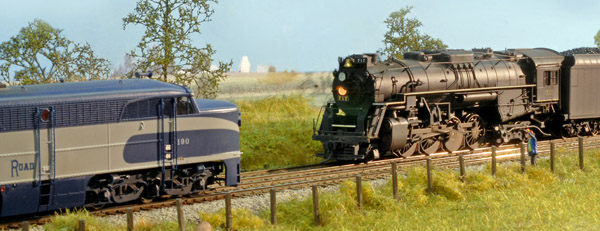

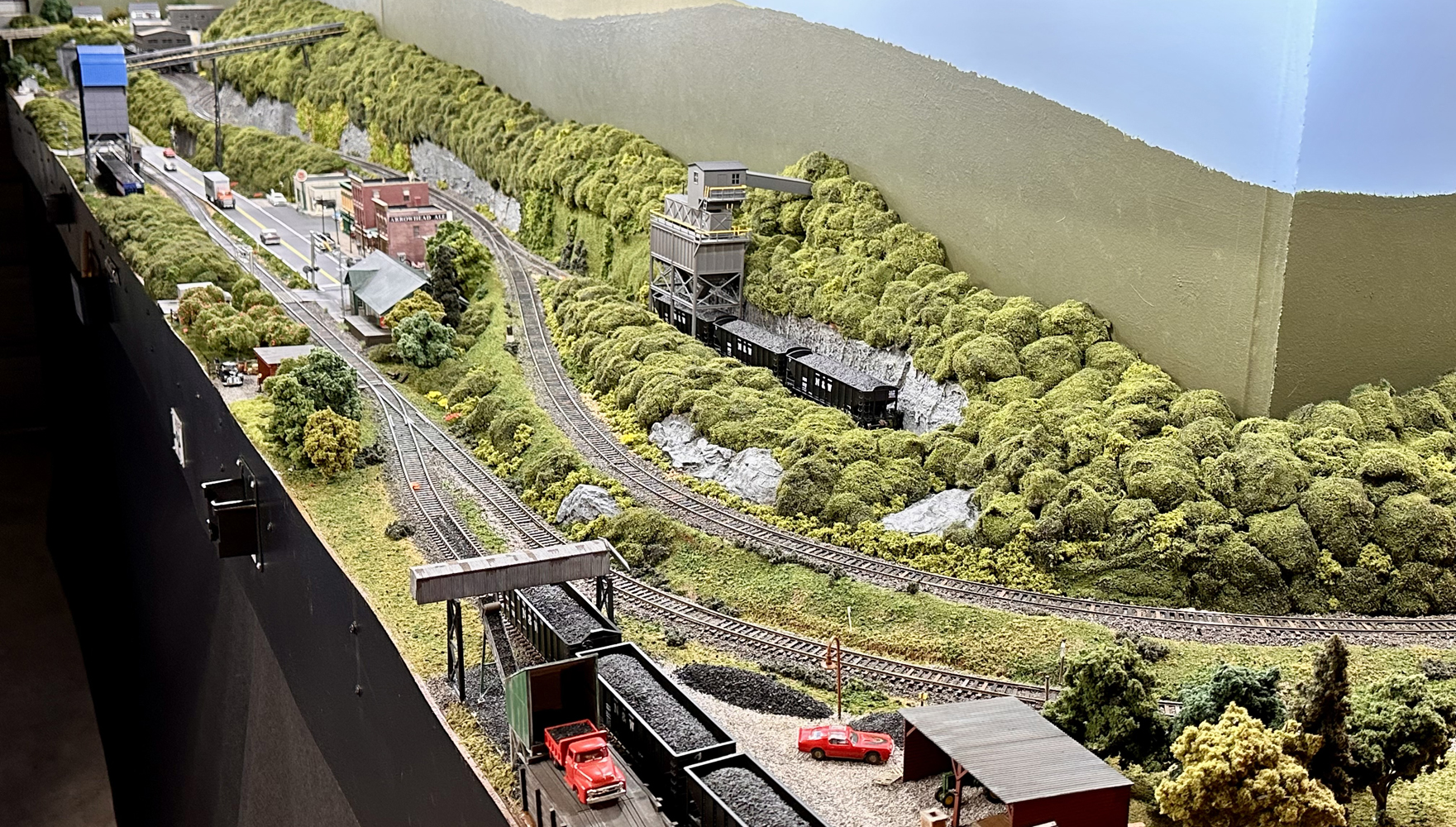
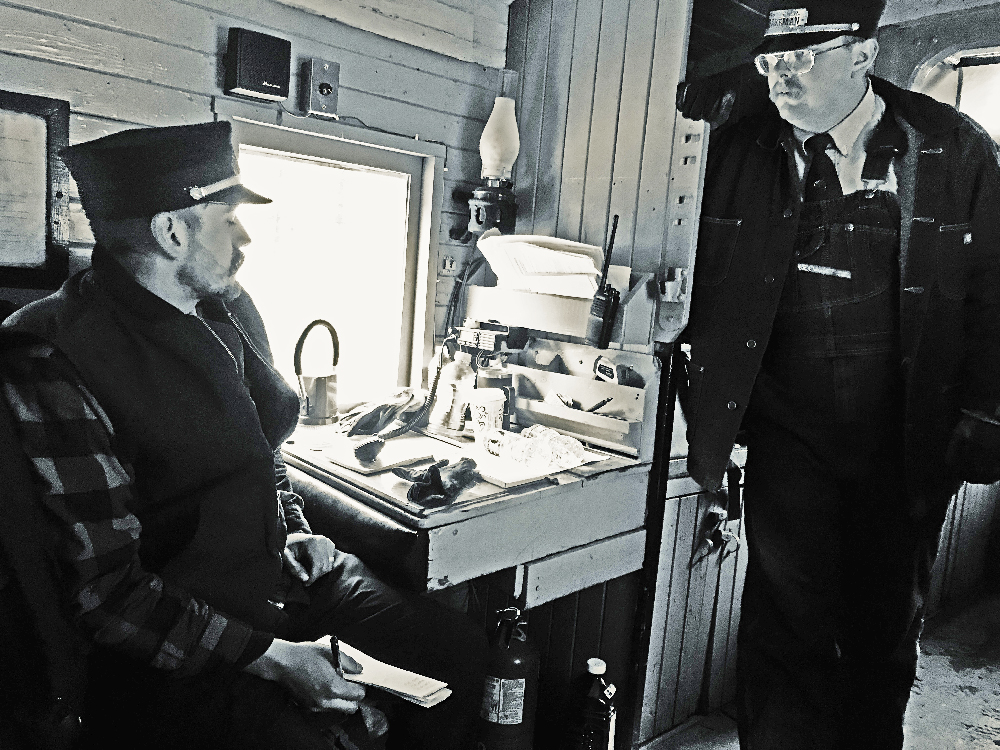
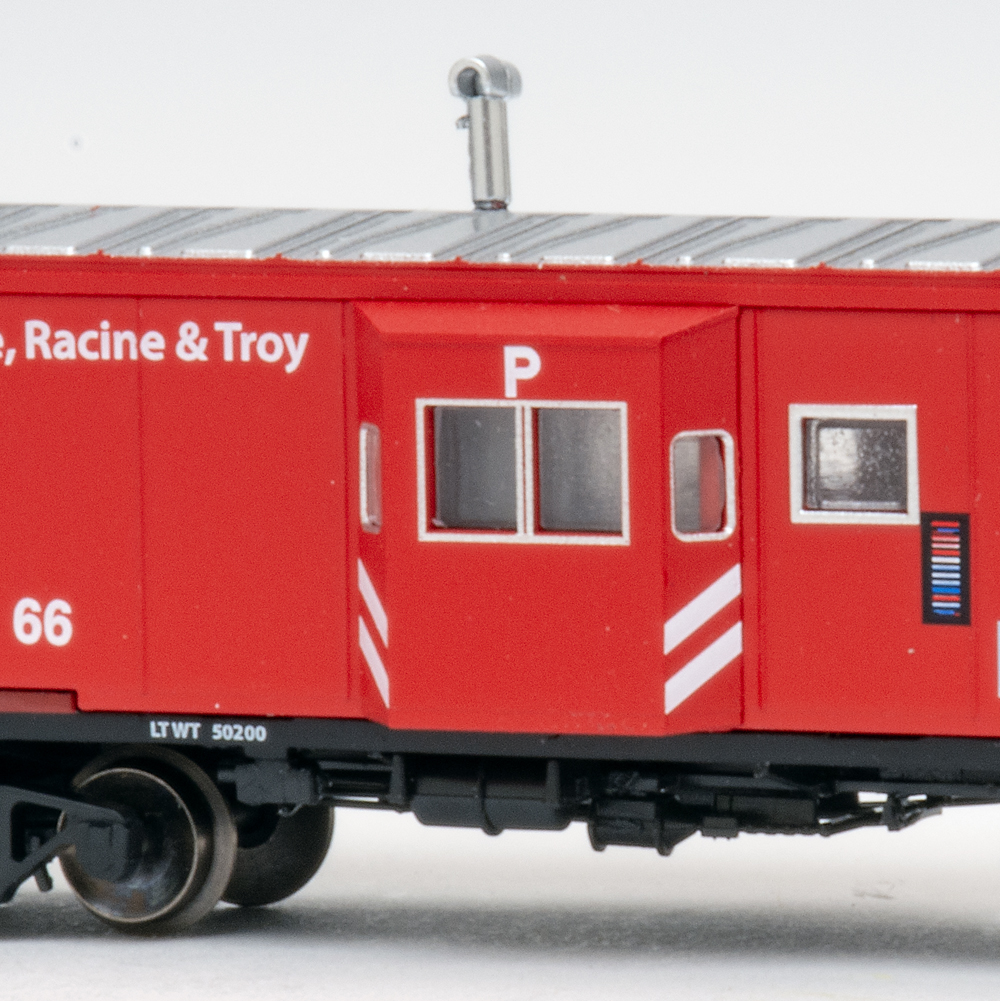
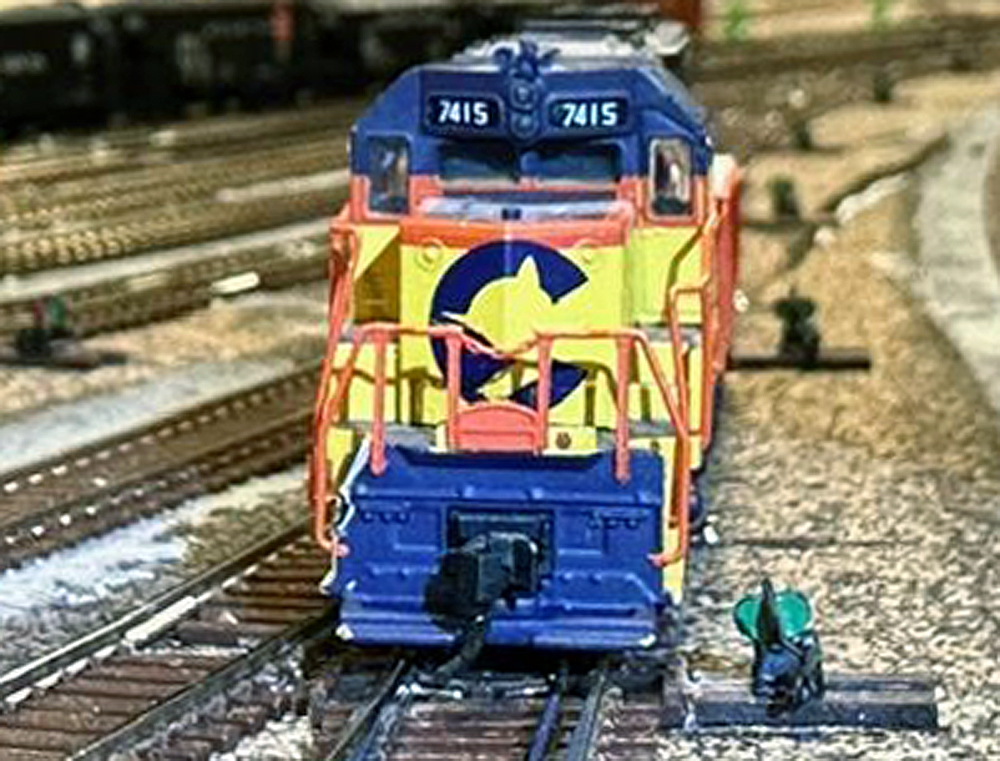
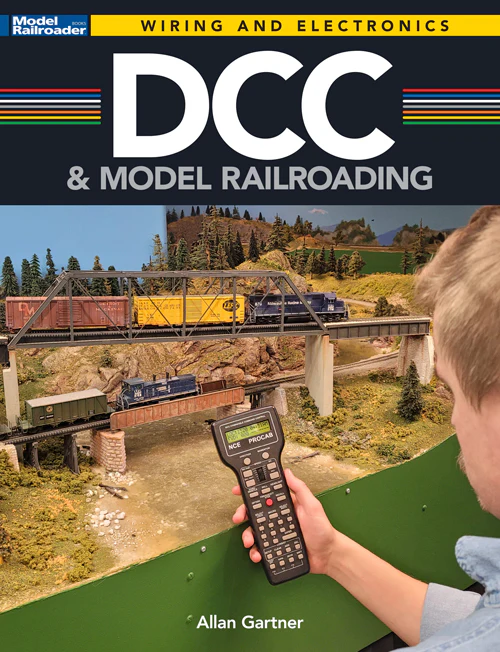

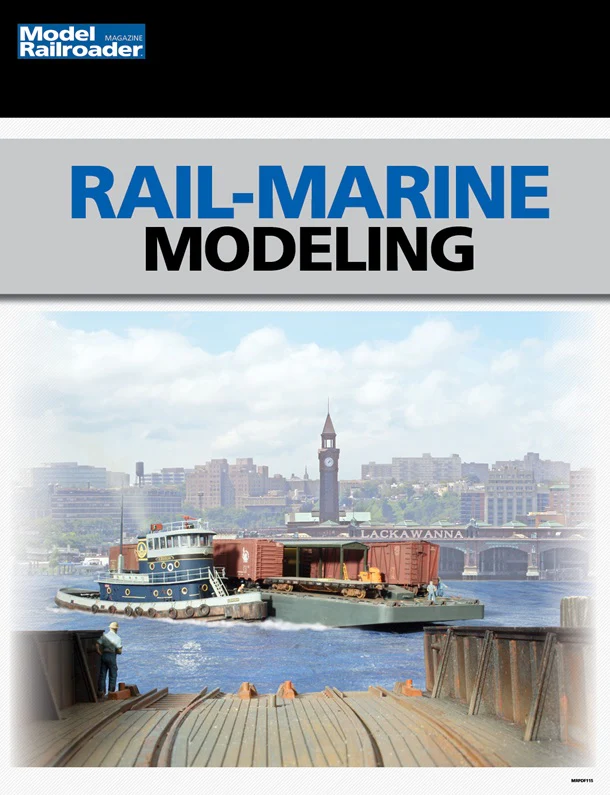

This is very helpful. It helps put important events in their proper perspective as we try to determine the time line for what is correct for our own eras. Thank you.
WHERE IS YOUR LISTING 4 ORDERING BACK SPECIAL MAGS OR BOOKS (like liberary)? I'm new to computers & don't have a printer yet 4 downloading anythig. Thank U
Very instructive! This grear article presents in a consise and clear way all major rail realted events form the steam to diesel transition to the mega merger eras
Lots of good info…always interested in better understanding the year(s) certain diesels appeared …also interesting to read about the years of Bigger mergers …good article!!
Andy,
A tour de force compilation of railroad history that is certainly useful for planning a layout time-frame, but much more valuable, in my opinion, as a reference guide to the historical record of American railroading. Thank you for it.
A very helpful article. I will use this to help pick rolling stock for my layout.
Thanks.
This is sad reading for me. Now, in one place, I can see the familiar and favorite railroading of my youth going away piece by piece.
Andy,
If you could push that back to 1930 I could use it too. See, we're never satisfied (the 1905 modelers are lurking and the post civil war guys are holding their breath). Of course you could just refer everyone to Figure 4-5 in Armstrong's "Creative Layout Design". 8
Very useful. This will help me choose cars for my N scale version of the Burlington Northern 34th subdivision track plan you published. Thank you.